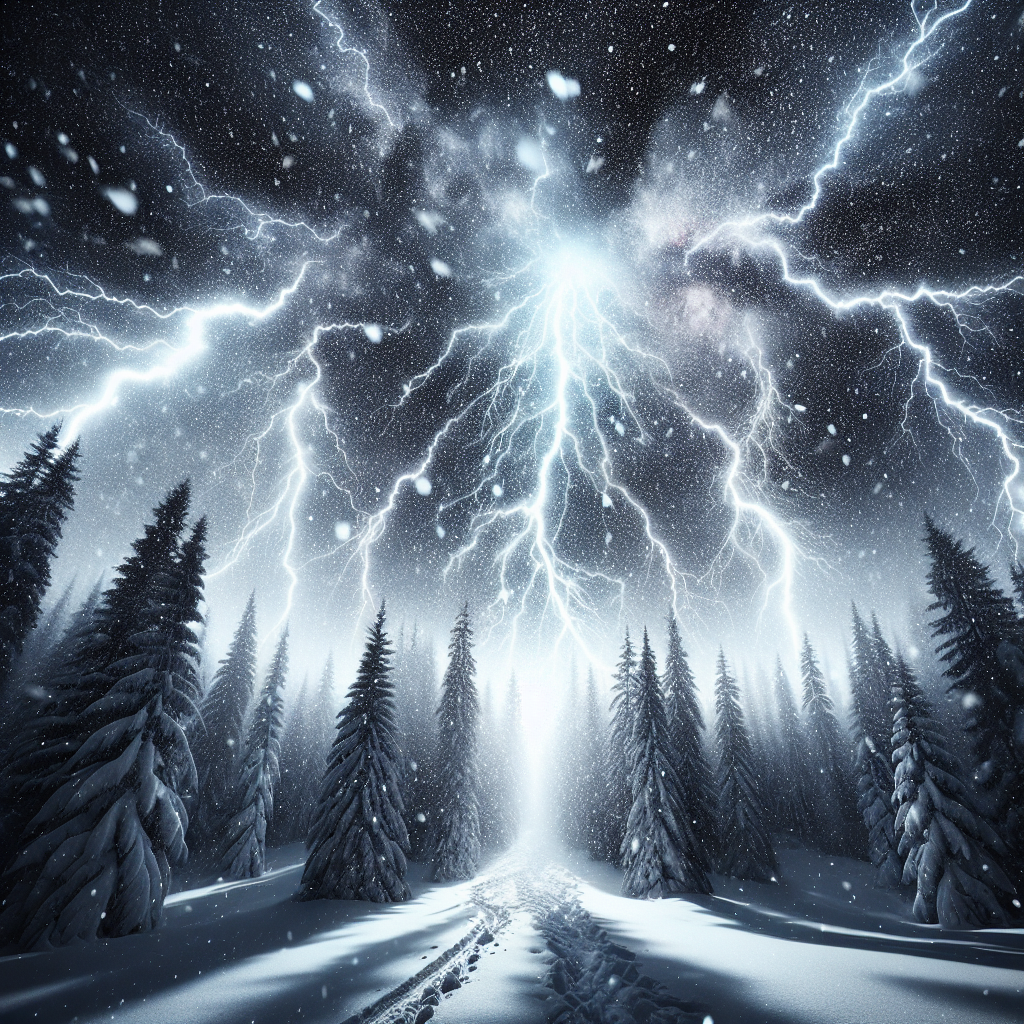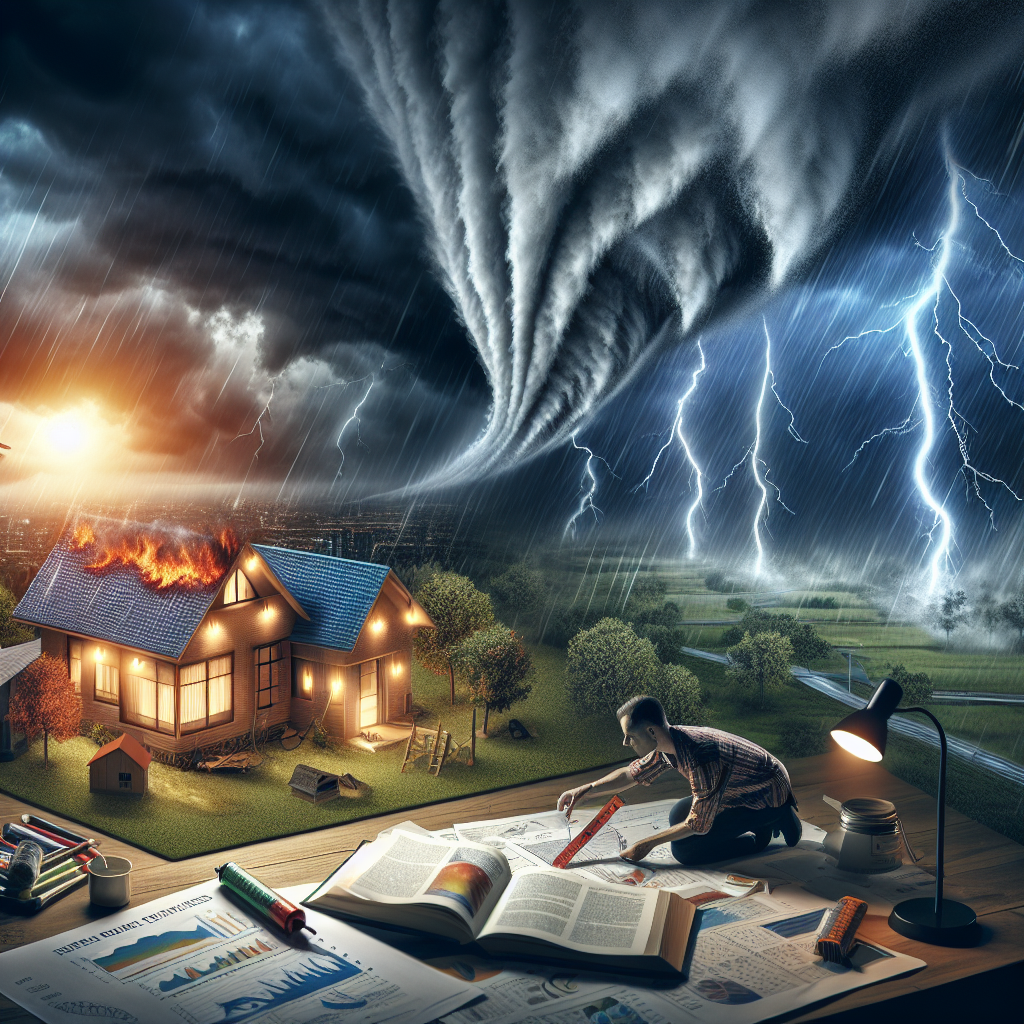What are Thunderstorms?
Thunderstorms are a type of weather phenomenon characterized by the presence of thunder and lightning. They are part of a larger classification called convective storms, which form when warm, moist air rises rapidly, cools, and subsequently leads to the formation of clouds and precipitation. Thunderstorms can occur anywhere in the world but are most frequent in tropical and temperate regions.
The Formation of Thunderstorms
Thunderstorms begin with a process called convection. This occurs when the sun heats the Earth’s surface, causing warm air to rise. As this air ascends, it cools, and the moisture within it condenses into water vapor, forming clouds. The type of cloud primarily responsible for thunderstorms is the cumulonimbus cloud, known for its towering structure that can reach up to 10 kilometers into the atmosphere.
Once the cloud reaches a certain height, it becomes unstable and may result in strong updrafts. These updrafts can cause the cloud to grow vertically. Eventually, the moisture condenses into droplets heavy enough to fall, resulting in precipitation. The process releases latent heat, further fueling the storm and often leading to the formation of downdrafts, completing the cycle of thunderstorm development.
Types of Thunderstorms
There are three main types of thunderstorms, each with unique characteristics:
Single-cell Thunderstorms: These are the simplest form of thunderstorms, typically lasting only 20 to 30 minutes. They develop due to localized heating and are often non-severe.
Multicell Thunderstorms: As the name suggests, multicells consist of a group of individual storms that are interrelated. They can last for several hours and often produce heavy rainfall, strong winds, and hail.
Supercell Thunderstorms: These are the most severe type of thunderstorms, characterized by a rotating updraft known as a mesocyclone. Supercells can produce extreme weather events, including large hail, damaging winds, and tornadoes.
Structure of a Thunderstorm
A mature thunderstorm has a distinct structure consisting of several layers:
Updraft: This is the rising column of warm air that feeds the storm, allowing it to grow taller and more powerful.
Downdraft: Once precipitation begins, air becomes cooler and heavier, leading to a downdraft. Downdrafts can produce gusty winds and heavy rainfall.
Anvil: This is the flat, spreading top of the storm cloud, indicating the height to which the storm can grow. Anvils are often seen extending outwards at the top of a cumulonimbus cloud.
Outflow Boundary: This is the line that marks the boundary of cooled air that has spread away from the surface of a thunderstorm. It can trigger the development of new storms nearby.
Thunder and Lightning
Lightning is one of the most dramatic aspects of a thunderstorm and occurs due to electrical charges built up within the storm clouds. The process begins when ice particles within the cloud collide, causing a transfer of electrons. As a result, different parts of the cloud acquire either positive or negative charges, leading to the development of a strong electrical field.
When the difference between the charges becomes significant, a discharge of electricity happens, resulting in lightning. This rapid expansion and contraction of air surrounding the lightning bolt create the sound known as thunder. The phenomenon can occur in various forms, including cloud-to-ground, ground-to-cloud, or intra-cloud lightning.
The Dangers of Thunderstorms
Thunderstorms can pose serious risks, including:
Severe Wind: Straight-line winds can exceed 100 mph, causing damage to structures and trees.
Hail: Hailstones can cause significant damage to crops, vehicles, and roofs, often varying in size from small pellets to golf-ball-sized or larger.
Flooding: Intense rainfall within a short period can lead to flash flooding, which can be life-threatening.
Tornadoes: Particularly in supercell storms, tornado formation is possible. Tornadoes can cause devastating destruction in their paths.
Monitoring Thunderstorms
Meteorologists use various tools and techniques to monitor thunderstorms. Doppler radar is one of the most essential tools, providing real-time information on precipitation intensity, wind patterns, and storm rotation, crucial for tornado forecasting. Additionally, satellite imagery helps visualize cloud cover, storm movement, and development.
Weather balloons are also used for gathering data about temperature, humidity, and wind at different altitudes. This information is invaluable for predicting storm behavior and potential severity.
Safety Tips During Thunderstorms
When thunderstorms are in the forecast, it’s essential to take safety precautions:
Stay Indoors: If you hear thunder, seek shelter indoors, ideally in a well-constructed building.
Avoid Electrical Appliances: Unplug devices to prevent damage from lightning strikes.
Stay Away from Windows: Strong winds and hail can break glass, causing injury.
Do Not Seek Shelter Under Trees: While it may seem safe, trees can attract lightning and can also fall during intense winds.
Stay Informed: Use a weather app or listen to local news updates for real-time information about the storm.
Conclusion
Understanding thunderstorms entails an appreciation of their formation, structure, and potential dangers. By staying informed and prepared, one can enjoy the awe-inspiring spectacle of thunderstorms while minimizing risk. Nature’s electric show remains one of the most fascinating and powerful phenomena on Earth.


















